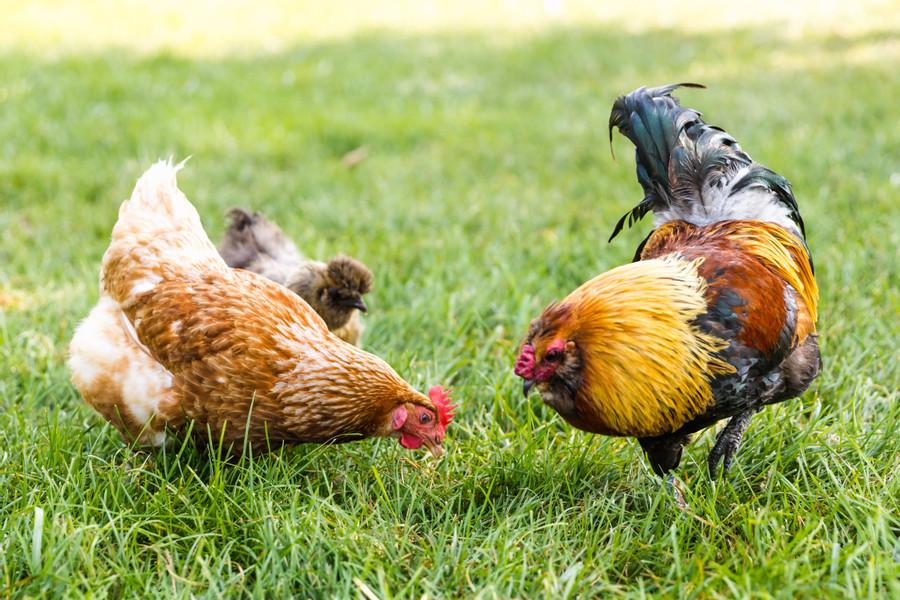Explore the World's Best Ideas
Join today and uncover 100+ curated journeys from 50+ topics. Unlock access to our mobile app with extensive features.
Explaining Inflation
From groceries to gas, prices are up on a multitude of items — including one particular consumer staple: eggs.
There’s a lot of chatter around exactly why inflation is relatively high, not only in the United States but globally. Some people blame the pandemic, others the supply chain, others government spending, others corporate greed. The truth of the matter is that there is a mix of factors in play, and there’s no one simple answer to how we got here — or solution to how to get out of this. To the average person, the whole thing can feel confusing.
23
495 reads
The Consumer Price Index
The Consumer Price Index, which measures the average change in prices paid for things like food, clothes, housing, and transportation, was up by 7.5 percent overall over the past year as of January.
The price of eggs, according to the measure, was up by 13.1 percent.
The cause of the egg price increases we’re experiencing now is more of a production issue than a demand one, though both are in the mix. Egg prices depend in part on the chickens that lay the eggs — and currently, they’re more expensive to feed.
21
417 reads
The Egg Industry
The egg industry, like every industry, is facing higher prices and challenges that are leading to costlier eggs for consumers overall.
According to USDA data,the average year-to-date price on Grade A large eggs was $1.46 a dozen, which is up from $1.01 a dozen in 2021 and $1.00 a dozen in 2020. Because eggs are one of the ingredients in so many food items, you can see how all of this could push prices up on other things, too.
21
378 reads
Transportation Costs
Increased freight costs are contributing to higher prices as well. Trucks to get the eggs from point A to point B are more expensive, as is fuel (likely becoming even more so now, thanks to the Russian invasion in Ukraine and subsequent sanctions). Moscogiuri estimates that freight up 30 to 40 percent can translate into an extra 10 cents a dozen.
20
314 reads
The Pandemic And The Egg
Everything is getting more expensive because everything else is, including when it comes to eggs. Like it has all industries, the pandemic has shaped the story of the egg market over the past two years, and that story hasn’t been a linear one. When the pandemic hit, there was a big spike in demand for eggs. People were cooking more at home, and eggs are often an item people could easily buy and store.
The carton companies are struggling to make deliveries. Everybody’s raising their prices on everything, from cartons to corrugated boxes to the plastic wrap that goes around the eggs.
20
287 reads
Month On Month CPI
Looking at the Consumer Price Index month to month, you can see how egg prices have bounced around during the Covid-19 outbreak. The CPI for eggs jumped by 15 percent in April 2020 and then fell in May, June, July, and August. The price drop is in part because the early days of the pandemic curbed demand for eggs and egg products from restaurants and fast food companies and food service operations, even while people were buying eggs at the store.
20
267 reads
It’s Expensive to Be Nice to Chickens
As corporations and states start to push for eggs from cage-free chickens, that is pushing prices up, too. Essentially, it’s pricey to be nicer to chickens.
Consumer demand for cage-free eggs has grown, though it’s not everyone’s priority. However, when regular eggs are more closely priced to cage-free and organic eggs, consumers start to opt for the slightly fancier option.
20
268 reads
The Bottom Line
Eggs don’t paint the full inflation picture in the US, but they do a part of it — it’s more expensive to feed chickens and move eggs around, so it’s more expensive to produce and move eggs, so it’s more expensive for consumers to buy eggs.
They also help highlight the difficulties of solving the inflation problem. The egg industry isn’t wildly concentrated, so there’s not really a singular Big Egg to lean on to bring prices down. It’s also not the case that consumers flush with cash have been pouring their stimulus checks into eggs.
21
228 reads
IDEAS CURATED BY
Roger Conrad's ideas are part of this journey:
Learn more about moneyandinvestments with this collection
Identifying the skills needed for the future
Developing a growth mindset
Creating a culture of continuous learning
Related collections
Similar ideas
5 ideas
What Determines Gas Prices?
investopedia.com
2 ideas
3 ideas
Is It Time to Raise Your Prices?
insight.kellogg.northwestern.edu
Read & Learn
20x Faster
without
deepstash
with
deepstash
with
deepstash
Personalized microlearning
—
100+ Learning Journeys
—
Access to 200,000+ ideas
—
Access to the mobile app
—
Unlimited idea saving
—
—
Unlimited history
—
—
Unlimited listening to ideas
—
—
Downloading & offline access
—
—
Supercharge your mind with one idea per day
Enter your email and spend 1 minute every day to learn something new.
I agree to receive email updates







